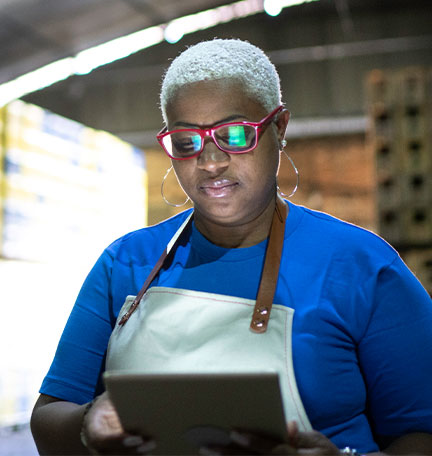Chief Marketing Officer Abbas Merchant shares how small businesses can use technology to meet consumers’ changing demands and improve customer experience.
No matter your industry, it’s safe to say that your customers’ expectations and behaviors have changed significantly over the last two years. Case in point: Today’s consumers are three times more likely to conduct at least 80 percent of their transactions online than they were before the pandemic.
We sat down with Abbas Merchant, Chief Marketing Officer at Regions Bank, to discuss how consumer behavior has shifted since the pandemic and how business leaders can leverage technology to improve customer experience.
Let’s start with the big picture: How have you seen consumer behavior change since the start of the pandemic?
Merchant: The pandemic has made some lasting changes in customers’ behaviors. Today more than ever before, customers are looking for what I call the three S’s: simplicity, speed, and stewardship. We’re all aware that the big tech companies have trained us to expect to get what we need with ease and simplicity and get it quickly. As a result, simplicity and speed are increasingly becoming table stakes for businesses of all sizes. The third S — stewardship — starts with empathy. Customers want to know that they’re doing business with brands that care about their associates, and they care about the communities, and they care about customers’ needs.
One consequence of living in the virtual world is that people are facing technology fatigue. As a result, people are eager to reestablish personal relationships and engage in activities that involve in-person interaction. Of course, some of the behaviors that we’ve adopted and adapted to, like using more digital to do our day-to-day activities, will continue to stay with us. This brings a unique opportunity for businesses to combine the convenience of virtual with a high-touch experience of in-person interaction.
Let’s talk a bit more about the third S: stewardship. What is the most important aspect of engaging and understanding customers, and how can businesses gain that understanding and act upon it to improve customer experience?
Merchant: I believe that when it comes to engaging and connecting with customers, the most important element is empathy. This means that we must understand how the customers’ priorities have changed and what concerns are top of mind.
Because of our reliance on technology both as consumers and businesses, companies have unprecedented insight into their customers. They have access to information on the visitors to their websites — who they are, what they’re trying to do. Businesses can learn a lot from that information and use it to personalize the experience they’re delivering. Using data from across the different channels and connecting the data points together to paint a more holistic view about where the customers might be in their journey — that’s really important. There’s no better time than now to adopt new digital and data and analytics capabilities.
You mentioned the importance of speed and simplicity. How can smaller businesses use technology to compete against large tech companies in this arena?
Merchant: No matter your industry, there are digital solutions and apps available that complement your businesses. For example, think about small mom and pop restaurants that historically may not have the ability to offer online ordering and contactless delivery. Today, however, there are a wide array of third-party apps such as food delivery or grocery delivery apps that can serve as an extension of their business. These platforms enabled independent restaurants to meet their customers’ needs during lockdowns without having to invest in building out the technology, hiring delivery staff, and so on.
Technology has empowered small businesses in all industries to be able to serve the needs of their customers as well as — or even better than — many of the large organizations. Thanks to the rise of software as a service, technology is now more affordable and more accessible than ever before.
In addition to adopting new technology, what else can small to midsize businesses do to set themselves apart and improve customer experience?
Merchant: My advice would be that we should always keep a focus on the customer and work to understand what’s important to them in the moment and deliver on that in an authentic fashion.
As we look ahead, we can learn from the last two years and the challenges that we faced. The best experiences can be delivered when we effectively marry the digital capabilities with in-person capabilities. I think that companies that can deliver simple, seamless experiences to customers across the virtual and physical realms while demonstrating that they care about their customers, associates, and communities will be the best suited to thrive in the future. Learn from the past, take what has worked, and then combine it with what your business does best.
For more on using technology to improve customer experience, check out our full interview with Abbas Merchant in Episode 12 of our business podcast series, Commercial Insights with Regions Bank.
This conversation was edited for length and clarity.











